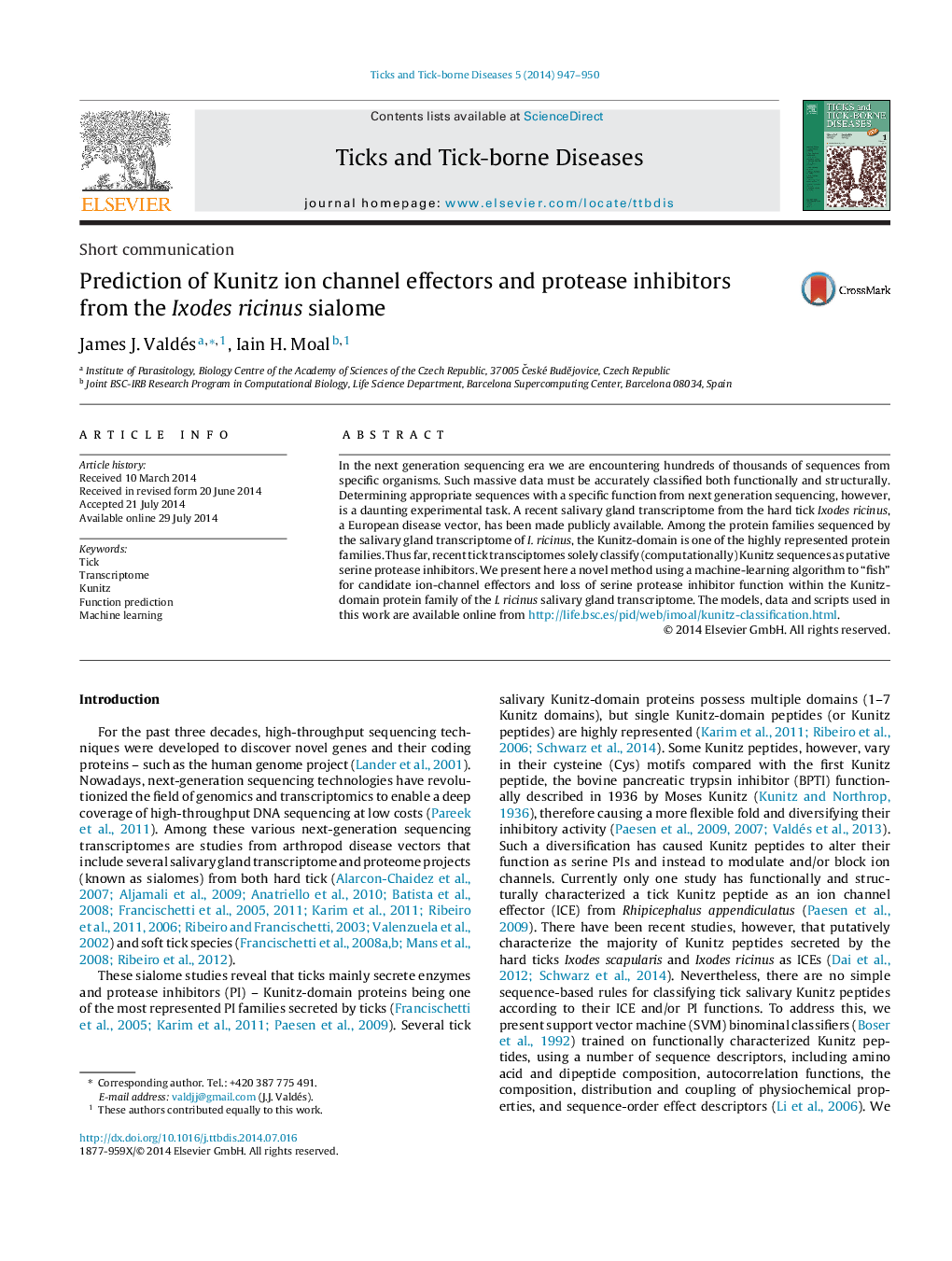| Article ID | Journal | Published Year | Pages | File Type |
|---|---|---|---|---|
| 2474011 | Ticks and Tick-borne Diseases | 2014 | 4 Pages |
In the next generation sequencing era we are encountering hundreds of thousands of sequences from specific organisms. Such massive data must be accurately classified both functionally and structurally. Determining appropriate sequences with a specific function from next generation sequencing, however, is a daunting experimental task. A recent salivary gland transcriptome from the hard tick Ixodes ricinus, a European disease vector, has been made publicly available. Among the protein families sequenced by the salivary gland transcriptome of I. ricinus, the Kunitz-domain is one of the highly represented protein families. Thus far, recent tick transciptomes solely classify (computationally) Kunitz sequences as putative serine protease inhibitors. We present here a novel method using a machine-learning algorithm to “fish” for candidate ion-channel effectors and loss of serine protease inhibitor function within the Kunitz-domain protein family of the I. ricinus salivary gland transcriptome. The models, data and scripts used in this work are available online from http://life.bsc.es/pid/web/imoal/kunitz-classification.html.
